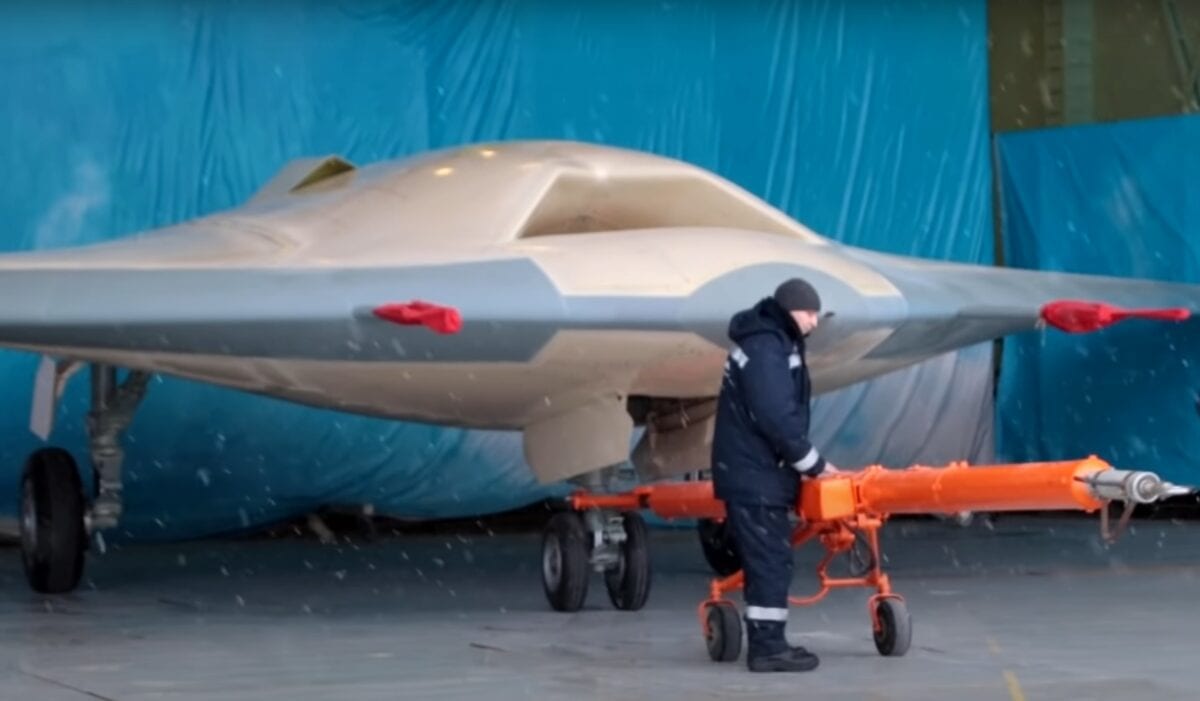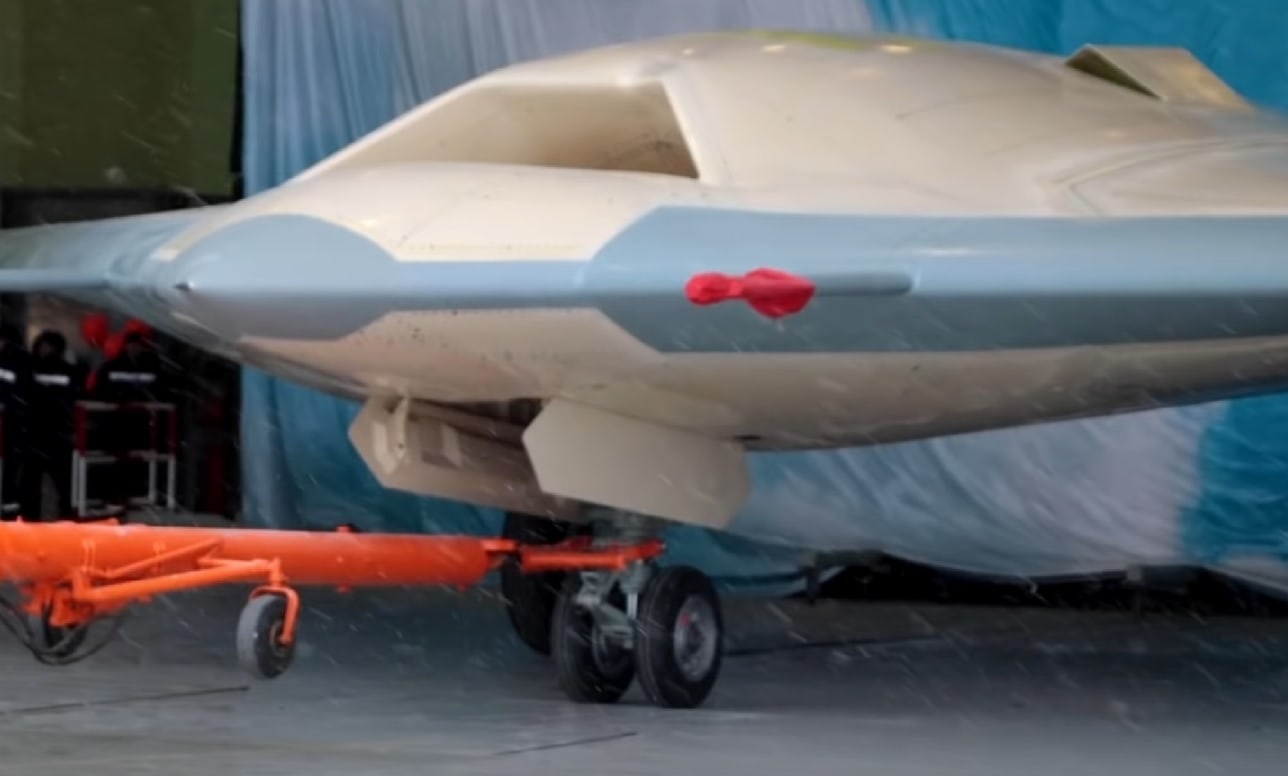Russia ‘Loyal Wingman’ Combat Drone Will Boost Latest Stealth Fighter: Russia is one step closer to deploying a stealth combat drone that would serve as a “loyal wingman” to its Su-57, its 5th-generation stealth fighter. The Su-57 would be able to control the unmanned craft from the cockpit. S-70 Okhotnik-B also has some autonomous capability and could attack from a formation led by the Su-57.
New Peek at the Okhotnik
The S-70, also called the Hunter, was seen this week in a video shot at Novosibirsk Aircraft Production Association in Siberia. This version of the flying-wing Okhotnik reportedly has a flattened jet nozzle that will make it more stealthy. The S-70 was also featured in a Russian television show this fall.
Look for It to Be Flying Regularly by 2024
The combat drone was showcased in two test flights as a technology demonstrator in 2019 – once for 20 minutes and another time flying with a Su-57. The Russian deputy defense minister said this week that the latest version of the Okhotnik is ready for more ground testing and should be fully operational by 2024.
The Saturn AL-31F engine pushes out a speed of 621 miles per hour with a combat range of around 2,500 miles. The Okhotnik can carry 4,400 pounds of munitions.
The Su-57 and S-70 Make a Formidable Team
The Okhotnik will be linked to the Su-57 with onboard artificial intelligence. The loyal wingman concept means both aircraft can share data for reconnaissance, intelligence, targeting information, and bomb damage assessment. The U.S. Force has their own loyal wingman concept called Skyborg.
Challenging for American Air Defenses
The Okhotnik and Su-57 pairing gives the Russians more options during combat. The pilot of the Su-57 can judge a mission that would be too dangerous for manned flight and instead assign the drone to strike a target.
While the Su-57 is not believed to be as stealthy as the F-35 or F-22, it still has formidable radar-evading characteristics. This would mean that the Su-57 and Okhotnik could, in theory, fly behind enemy lines and release an assortment of bombs and missiles. Also, the Su-57 would be able to do its own autonomous command and control that perhaps would not require an early warning airplane such as the Beriev A-100 to direct aerial combat.

Russia’s S-70 Okhotnik-B Loyal Wingman. Image Credit: Video Screenshot.
Harassing Flights Near Alaska Possible
When the pairing is ready the Russians could fly it to the Alaska air defense identification zone and challenge America’s ability to react. The U.S. intercepted at least 60 Russian aircraft near Alaska in 2020. If the loyal wingman concept is truly viable that would make the Air Force’s job more difficult. The Air Force usually answers Russian incursions near Alaska with the F-22, plus other support airplanes. Thus, the F-22 would have to maximize its air superiority role against the Su-57 and the Okhotnik.
The Okhotnik is certainly one to watch and it is likely the Russians will continue to crow about achieving its milestones during its development life cycle in the coming years. The pairing of the stealth aircraft should make the Air Force concerned about its ability to intercept Russian loyal wingman pairings. The Russians could also someday launch the Okhotnik from amphibious ships that would then force the U.S. Navy to deal with the stealth drone. Either way, American aerial combat planners will be busy with wargaming against the capabilities of the Okhotnik.
Now serving as 1945’s Defense and National Security Editor, Brent M. Eastwood, PhD, is the author of Humans, Machines, and Data: Future Trends in Warfare. He is an Emerging Threats expert and former U.S. Army Infantry officer. You can follow him on Twitter @BMEastwood.

